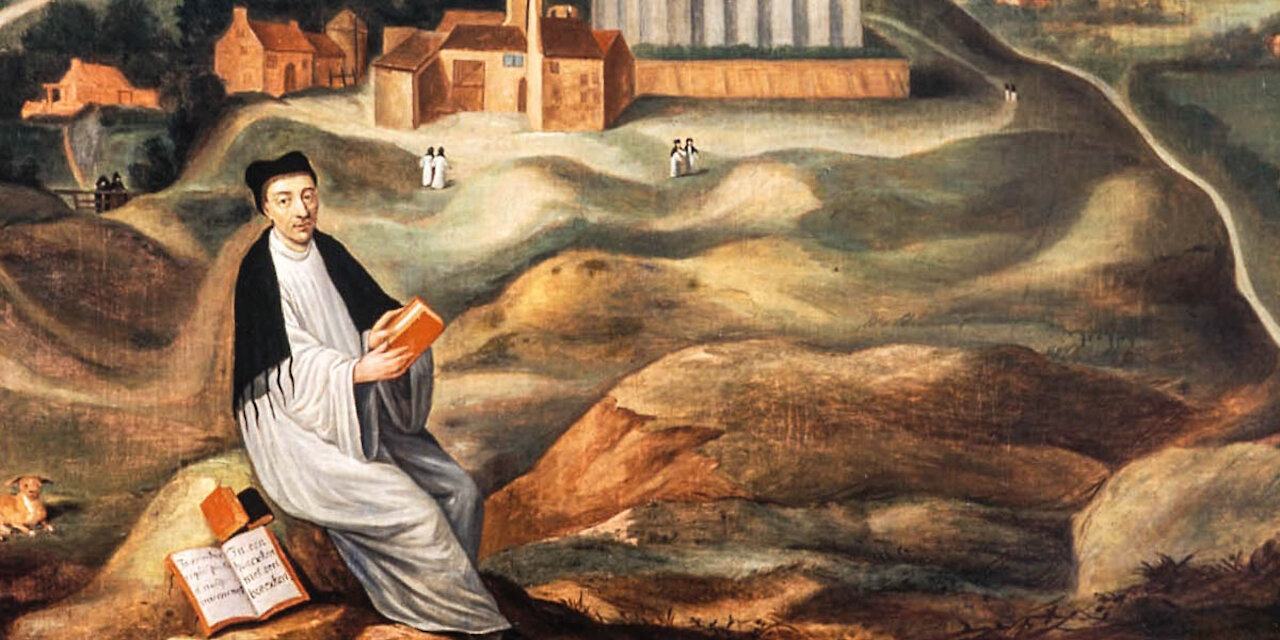Premium Only Content

The Imitation of Christ Thomas A Kempis II
IV. Who: Kempis (1379-1471, 92 yrs) was a Novice Master for his monastic community. This is a very important position in a monastery. It both insures its continuance and perspective. The monk not only needs to attract and keep young men but at the same time form them into a mindset congruous with the community.
Soul seeking instruction. We area t time in history body valued less, Gnosticism, search for information to make things right, easy answer, true attitude authentic spirit of God is not a counterfeit, easy answer. Person seeking truth not seeking a quick fix, expects challenge and difficult. Not a difficult text, but application is where the challenge comes. Read it and let it sit in soul. Be taught without interruption under guidance of Holy Spirit.
V. Audience: The Imitations is a distillation of the advice he gave to young men desirous of entering the Mount St. Agnes Monastery . This monastery was an off shoot of the Augustinians and worked to reform the Dutch and German Church before the Reformation. Kempis loved his community. In the approx. 72 yrs years within its walls, he only left twice and he would say he felt diminished as a monk each time . Thomas saw this work as a means of helping these young men. He did not consider his work applied to a larger audience. This reticence is reminiscent of Teresa of Avila’s Interior Castle. Teresa wrote under obedience, poor health, consoling herself that only her sisters would ever read it. Perhaps, Thomas had similar thoughts.
V. Authorship: As to be expected, there is scholarly debate about authorship. Creasy even handedly presents both the pro and against arguments. He eventually sides with Kempis probably being the author Given the weight of tradition. I, tending towards tradition, assert that Kempis is the author and agree with Creasy.
VI. Genre: 15th - 17th English Prose devotional literature
V. When: Composed 1420-1427, 1441 Latin autograph, earliest English translation is 1470, printed in 1503
VI Where: The Latin manuscript used for Creasy’ translation is housed at Bibliotheque Royale in Brussels, Netherlands
VII. Historical Setting: Great Schism shattered the Church for 2 generations. Pope Uban VI was a savage, cruel, repulsive and vengeful autocrat. He probably murdered five cardinals who opposed him. The Black Death swept Europe in 1348, killing a third of the population in less than three years, and reoccurred every decade for a hundred years with more death. Great Schism, Black Death, social unrest.
The Netherlands suffered from the plagues as well. The Low Countries were a loose collection of fiefs. A land of industrial and commerce was greatly impacted with the wide swings in supply caused by the Black Death. Constant wars on the continent further compounded economic strife. The monastery provided Thomas a haven a peace. Peace that let him find God.
A monastery’s purpose is to be so structured that a person gives himself fully to God. Serious prayer, study, solitude, and penance all have the same end, an intimate relationship with God.
-
 11:35
11:35
Fides et Ratio
1 year agoIgnatius’ Rules for Discernment Journey to God III
47 -
 LIVE
LIVE
The Shannon Joy Show
2 hours ago🔥🔥TACO Trump Rug Pulls AGAIN - Deploying His Fascist Police State In Red States NOT Blue.🔥🔥
230 watching -
 LIVE
LIVE
Grant Stinchfield
1 hour agoBig Pharma’s Dirty Secret: It Writes the Medical School Curriculum
94 watching -
 1:10:58
1:10:58
vivafrei
3 hours agoBanning the Burning of the Flag? Raja Jackson Assault & Some Insanely Stupid Takes! NYC Chems & MORE
29.1K25 -
 LIVE
LIVE
LFA TV
6 hours agoLFA TV ALL DAY STREAM - TUESDAY 8/26/25
4,788 watching -
 27:39
27:39
Crypto.com
3 hours ago2025 Live AMA with Kris Marszalek, Co-Founder & CEO of Crypto.com
39.7K3 -
 LIVE
LIVE
Trumpet Daily
1 hour agoTrumpet Daily LIVE | Aug. 26, 2025
374 watching -
 34:31
34:31
Rethinking the Dollar
1 hour agoTrump Targeting FOMC Board To Reassure Rate Cut | Morning Check-In: Let's Talk...
10.9K -
 1:21:20
1:21:20
The Big Mig™
4 hours agoViolence & Burning The U.S. Flag, Democrats New Battle Cry
44.7K10 -

The State of Freedom
3 hours ago $0.33 earned#327 Digging Deeper into the Carbon Capture Scam w/ Brad LeBlanc
15K